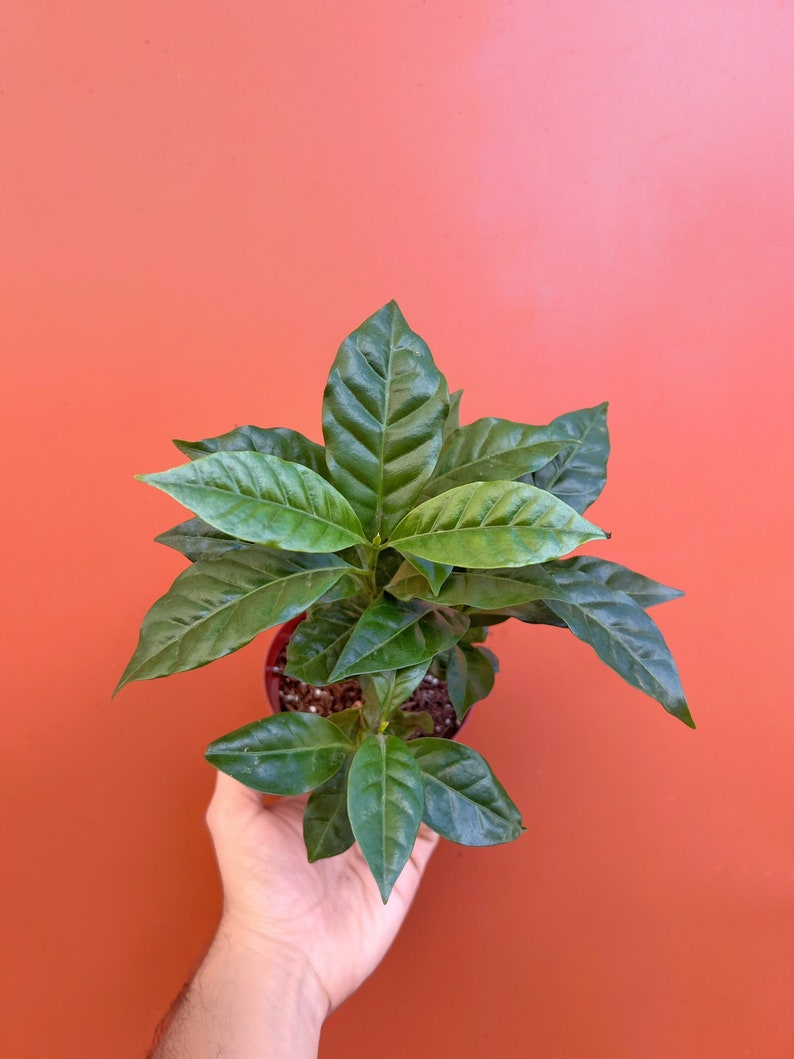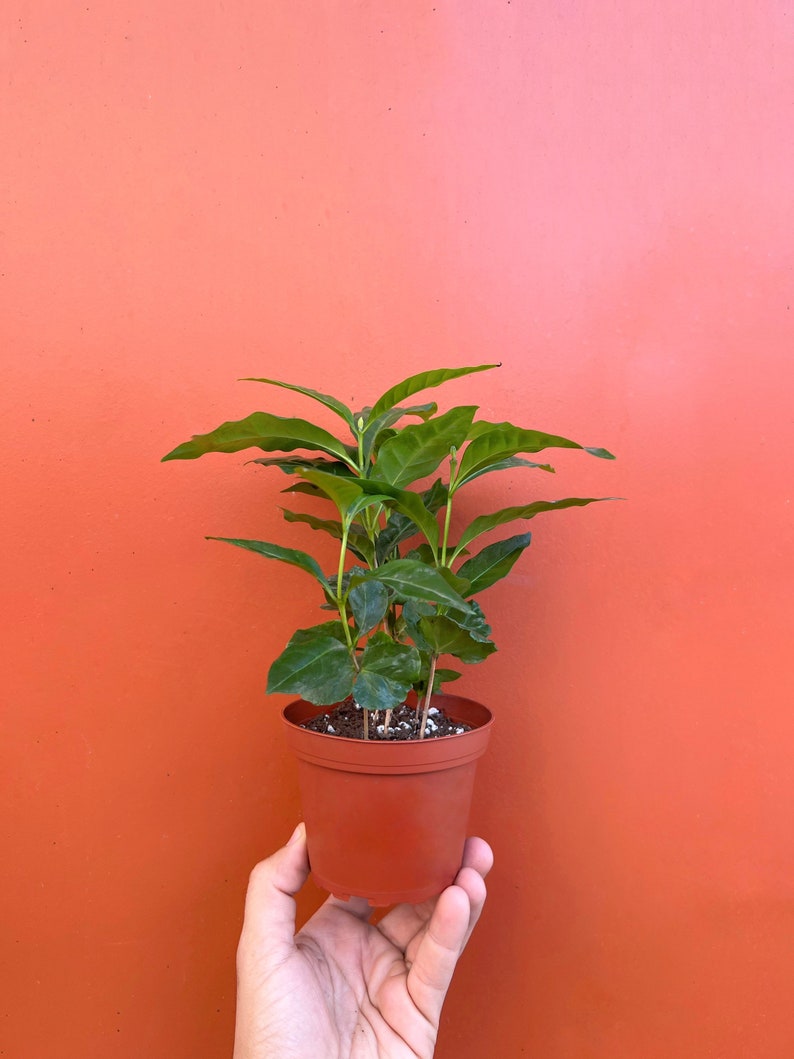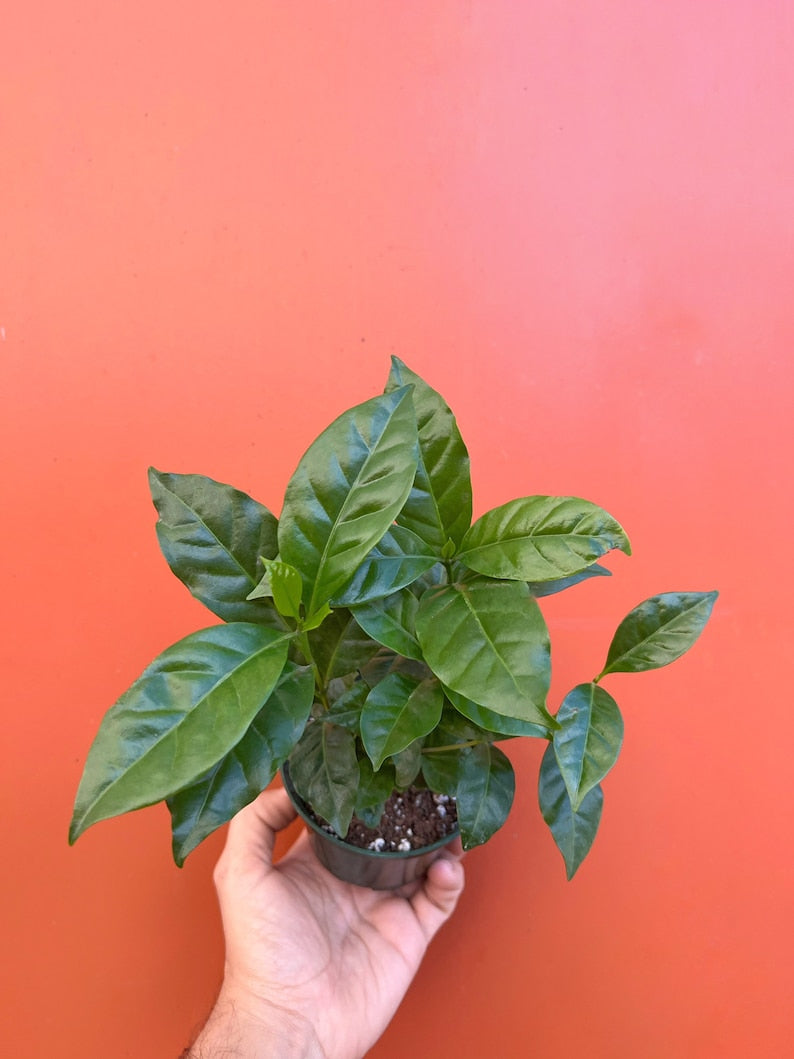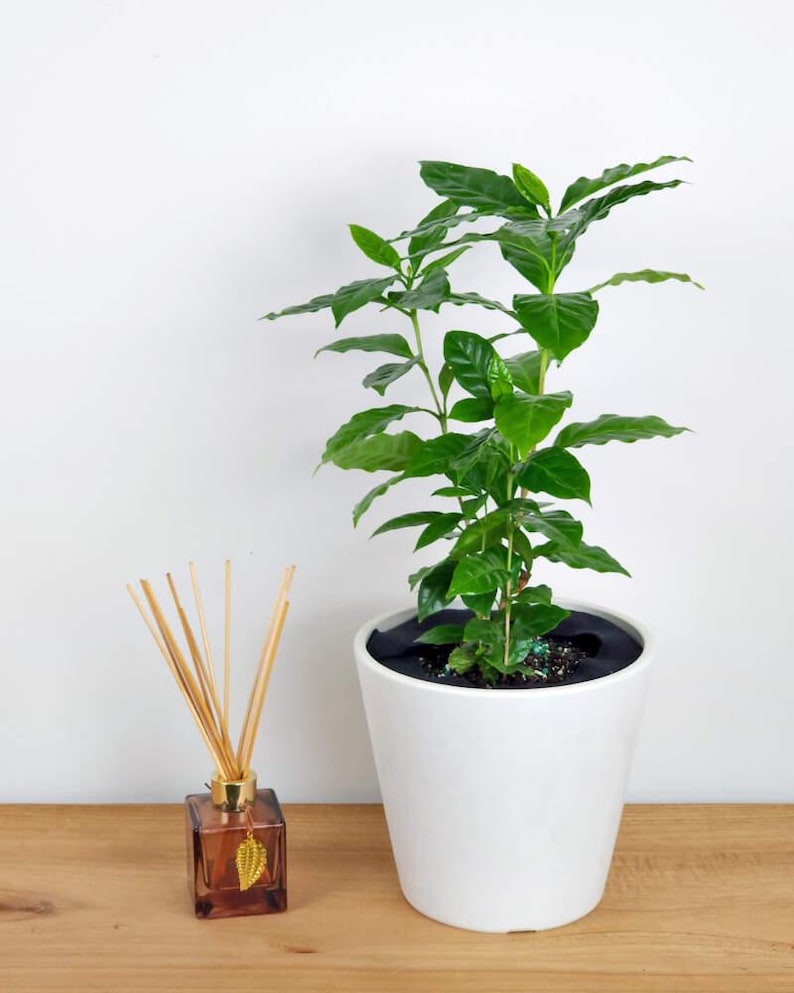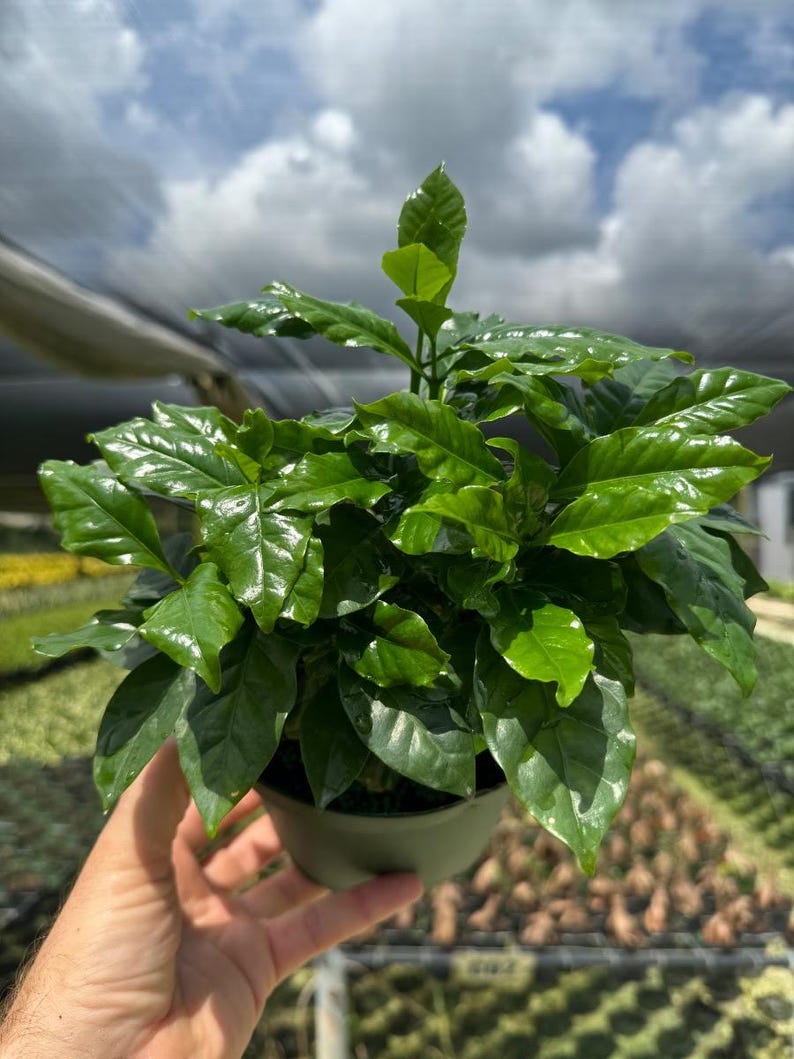THEODDFROND
Arabica Coffee Plant | Live Indoor & Outdoor Tropical House plant | Home and Office Decor | Easy Care Rooted in a 4", 6" or 8" inch Pot
Arabica Coffee Plant | Live Indoor & Outdoor Tropical House plant | Home and Office Decor | Easy Care Rooted in a 4", 6" or 8" inch Pot
Couldn't load pickup availability
You will receive the plant as shown on the picture or similar in size in a 4", 6" or 8" inch Pot.
The coffee plant is an attractive little specimen with glossy green leaves and a compact growth habit. It makes a surprisingly good potted indoor plant. Native to Ethiopia, the coffee plant (Coffea arabica) will flower in the spring with small white flowers and then bear half-inch berries that gradually darken from green to blackish pods. Each of these fruits contains two seeds, which eventually become the coffee beans you use to brew coffee.
In their native habitat, coffee plants grow into medium-sized trees. But growers regularly prune the plants to be a more manageable size, especially when the plants are grown indoors.
Light
Coffee plants prefer dappled sunlight or full sunlight in weaker latitudes. They are actually understory plants (existing under the forest canopy) and do not thrive in direct, harsh sunlight. Coffee plants that are exposed to too much direct sunlight will develop leaf browning.
Soil
Plant coffee plants in a rich, peat-based potting soil with excellent drainage. Coffee plants prefer acidic soil, so if your plant is not thriving add organic matter such as sphagnum peat moss to lower soil pH. The ideal pH range is closer to 6 to 6.5.
Water
These plants are water lovers and require both regular and ample watering. The soil should stay evenly moist but not waterlogged. Never allow the soil to dry out completely.4
Temperature and Humidity
The optimal average temperature range for coffee plants is a daytime temperature between 70 to 80 degrees and a nighttime temperature between 65 to 70 degrees. Higher (hotter) temperatures can accelerate growth, but higher temperatures are not ideal for growing plants for their beans. The fruits need to ripen at a slow, steady pace.
In addition, because these plants naturally grow on the sides of tropical mountains, they thrive in highly humid conditions which usually receive plenty of rain and fog. A humidity level of 50 percent or higher should suffice. If the air is too dry, the leaf edges might start to brown. Mist the plant daily to raise the humidity level.
Fertilizer
Feed with a weak liquid fertilizer throughout the growing season every couple of weeks. Cut the fertilizer back to once a month or so in the winter.
_______________________
Please be aware that no plant is perfect and WILL have minor imperfections. Some leaves might contain rips, cuts, spots, discoloration, and/or slight folds.
Contact us with any questions!
PLEASE READ THE SHOP ANNOUNCEMENT FOR UPDATED POLICIES ON REFUNDS
Share
